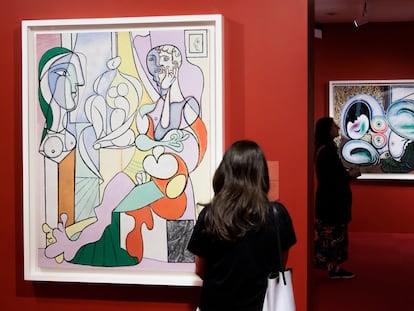Diana Widmaier, Picasso’s granddaughter: ‘My grandfather liked the smell of women and paint’
She holds a PhD in art history from the Sorbonne and is an expert in Picasso’s work. Now, she has created a candle collection for the Amen company that is inspired by the Spanish artist
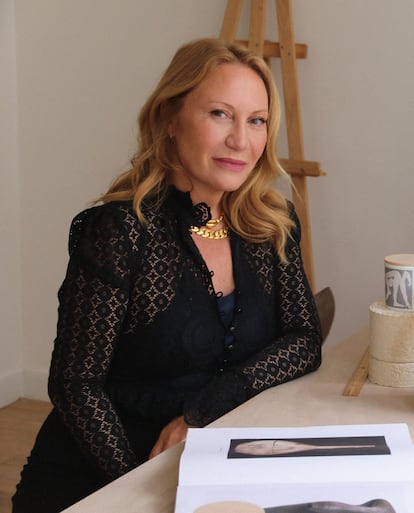
What would Picasso’s artworks smell like? Guernica would probably stink of smoke from Civil War bombings; Les Demoiselles d’Avignon would give off the scent of Provence’s lavender fields; Boy with a Pipe would reek of tobacco; and Portrait of Jaime Sabartés would be infused with the mild aroma of beer. Diana Widmaier Picasso, 49, the Spanish artist’s granddaughter, has been thinking about this and other unusual aspects of her grandfather’s legacy all her life. Whenever it seems that everything has been said and written about the legendary modern artist, she appears to discover something new (or not so new). “My grandfather liked the smell of women and paint,” says the expert in Picasso’s paintings and guardian of her family’s secrets.
Widmaier has a PhD in art history from the Sorbonne and a law degree from Panthéon-Assas. She specializes in modern art and has contributed in her own way to the jam-packed schedule of celebrations commemorating the 50th anniversary of Pablo Picasso’s death. Widmaier just published Picasso sorcier (Gallimard), a book in which she reveals the Cubist icon’s superstitions, religious beliefs, fears and fetishes; she curated the exhibition Maya Ruiz-Picasso, daughter of Pablo, the first show at the Picasso Museum in Paris to highlight the painter’s women as genuine subjects who contributed to his creative experience; and she partnered with Uruguayan entrepreneur and artist Rodrigo García to create a collection of candles that keep the creative fire of Picasso — that sacred monster — alive.
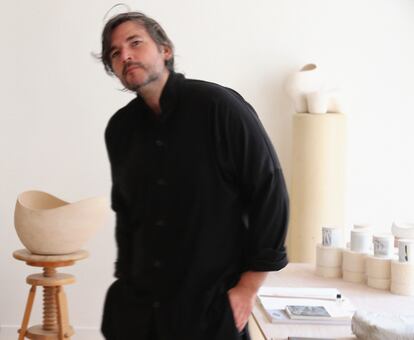
“My grandfather was a man full of passion. He was able to reinvent himself so many times thanks to the women he transformed into icons and muses,” Widmaier explains. One of those women was Maya Ruiz-Picasso, the artist’s daughter with Marie-Thérèse Walter, who died in December 2022 at the age of 87. Ruiz-Picasso devoted much of her life to promoting her father’s legacy, and before her death, she passed that baton to her daughter. “My mother lived long enough to see these candles. She loved them. Her favorite was the jasmine one,” she says.
Jasmine, nature and sustainability were at the heart of the decision to create this candle collection. Diana Widmaier and Rodrigo Garcia met at a mutual friend’s birthday party in Paris. They were seated next to each other and instantly became friends. She had just settled in the French capital after living in New York, and he had just moved to France from Uruguay to start his sustainable candle brand, Amen Candles. In 2020, Garcia invited Widmaier to a presentation of his brand at the Dover Street Parfums Market in Paris. She was fascinated by Amen’s concept: natural, vegan, plastic-free wax candles; handcrafted in Grasse; presented in a Limoges porcelain container; and wrapped in biodegradable circular packaging made from mushrooms that absorb carbon dioxide. “We make them in France, and they arrive at your home, or at the Metropolitan [Museum] in New York, or at the Picasso Museum in Barcelona [...] without any trace of plastic,” says the brand’s founder.
“Did you know that Picasso didn’t use plastic in any of his 50,000 works of art?” Widmaier asked Garcia at that presentation. A month later, the painter’s granddaughter called her friend to tell him that she wanted to give Amen candles to several artists, gallery owners and museum curators. The request was so large that Garcia replied half-jokingly (but half seriously), “Well, if you want so many, why don’t we make one exclusively for you?”
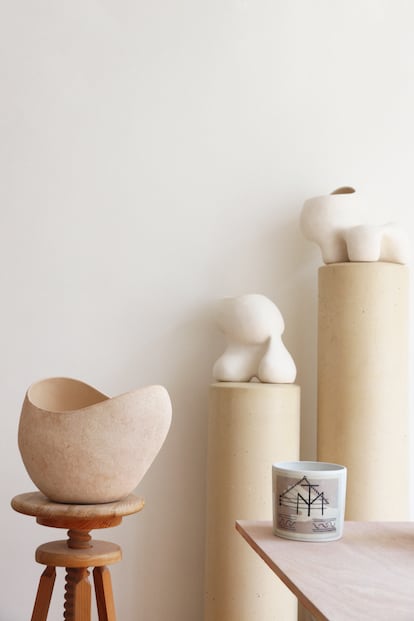
Widmaier liked that idea. “It was all very organic. One Sunday afternoon Rodrigo came to my house in Paris, and we started looking at the works in the Maya Ruiz-Picasso, daughter of Pablo exhibition catalog,” she recalls. “Diana and I didn’t want to turn to Picasso’s classic works for inspiration. We wanted to explore something new and original,” Garcia says. Figure, from 1927, was the starting point for this candle collection. Coincidentally (or not), 1927 was the year the Spanish painter met Marie-Thérèse, Diana’s grandmother, and began a secret relationship with her (at the time, he was still married to Russian ballerina Olga Khokhlova).
Widmaier’s grandparents’ love story permeates these home fragrances. “I included the painting Guitare à la main blanche, from 1927, because it bears my grandmother’s initials, MT. That reminded me of a love letter Pablo wrote to Marie-Thérèse in August 1936, in which he told her that her jasmine scent was always with him. My grandfather captured the essence of his love with that feminine, floral fragrance,” explains Widmaier. Each Amen candle is associated with a Picasso work and a fragrance: Guitare à la main blanche smells of jasmine; Acrobat, from 1932, has a ginger aroma; Reclining nude, from 1932, has the scent of amber; and Figure, from 1927, is redolent of orange and cinnamon. “For example, Figure must have smelled of orange because that scent reminds me of summers in the south of France and my mother’s childhood memories,” Widmaier explains.
Coincidentally, many of the paintings they chose for this collection were created by Picasso in his Antibes atelier, on the French Riviera, just twenty minutes from where Amen’s candles are handcrafted. But neither Widmaier nor Garcia believe in coincidences. “We believe in the power of design and art to change paradigms and ways of thinking. Within the limitations of living in a capitalist world, we’re trying to use the forces of capitalism for good and to say something we think is important,” Amen’s founder concludes.
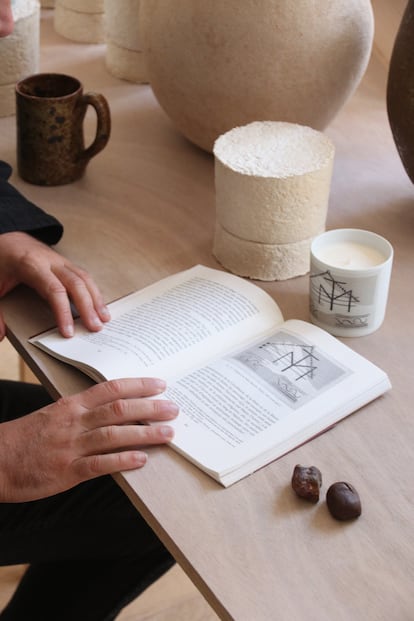
These candles smell like art, but they’re really about sustainability. Diana Widmaier became more interested in ecology after she became a mother in 2017. That same year she launched her own jewelry label, Menē, which is Aramaic for “currency” or “money.” The pieces are made from ethically mined gold and platinum from sustainable mines in Nevada, in the United States, and Ontario, in Canada. “I have a young daughter and I am happy to see that the new generations are more aware of the importance of preserving the environment,” she says. She named her daughter Luna in a clear allusion to the moon, which so many artists use to symbolize the feminine life force, fertility and resurrection. Luna is destined to be the next guardian of the Picasso legacy.
Sign up for our weekly newsletter to get more English-language news coverage from EL PAÍS USA Edition
Tu suscripción se está usando en otro dispositivo
¿Quieres añadir otro usuario a tu suscripción?
Si continúas leyendo en este dispositivo, no se podrá leer en el otro.
FlechaTu suscripción se está usando en otro dispositivo y solo puedes acceder a EL PAÍS desde un dispositivo a la vez.
Si quieres compartir tu cuenta, cambia tu suscripción a la modalidad Premium, así podrás añadir otro usuario. Cada uno accederá con su propia cuenta de email, lo que os permitirá personalizar vuestra experiencia en EL PAÍS.
¿Tienes una suscripción de empresa? Accede aquí para contratar más cuentas.
En el caso de no saber quién está usando tu cuenta, te recomendamos cambiar tu contraseña aquí.
Si decides continuar compartiendo tu cuenta, este mensaje se mostrará en tu dispositivo y en el de la otra persona que está usando tu cuenta de forma indefinida, afectando a tu experiencia de lectura. Puedes consultar aquí los términos y condiciones de la suscripción digital.
More information
Archived In
Últimas noticias
Maduro pleads not guilty before the federal court in New York: ‘I am still the president of Venezuela’
A new test can detect Alzheimer’s from a finger prick
UN team enters Sudanese city of El Fasher after paramilitary massacre: ‘It’s like a ghost town’
A recipe for resistance: Indigenous peoples politicize their struggles from the kitchen
Most viewed
- Gilles Lipovetsky: ‘If you want to live better and fall in love, take Prozac, don’t look to philosophy’
- Alain Aspect, Nobel laureate in physics: ‘Einstein was so smart that he would have had to recognize quantum entanglement’
- Alvin Hellerstein, a 92-year-old judge appointed by Bill Clinton, to preside over Maduro’s trial in New York
- Why oil has been at the center of Venezuela-US conflicts for decades
- Maduro’s downfall puts China’s relationship with Venezuela to the test

